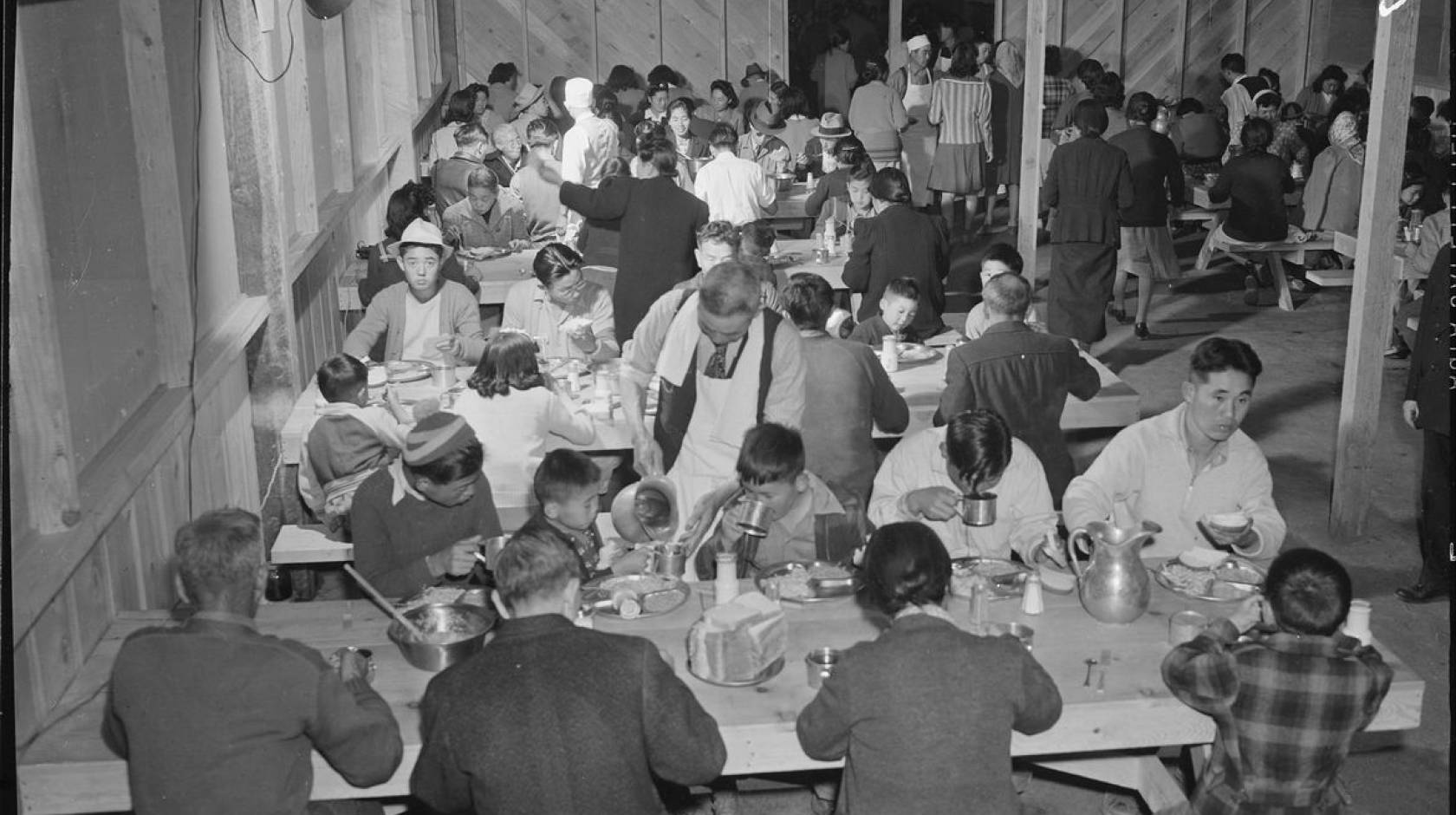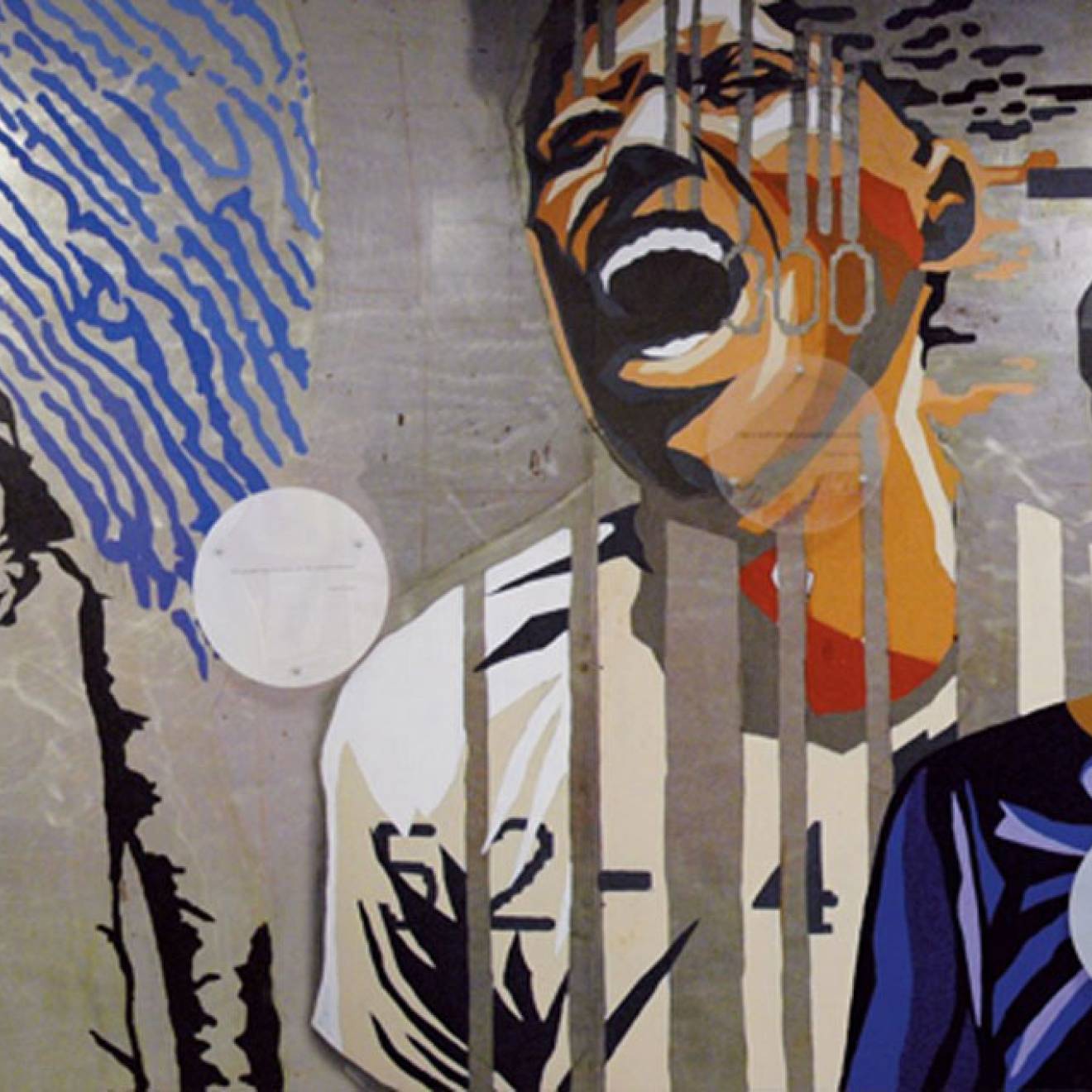Jessica Wolf, UCLA

Ryan Horio knows that his grandmother’s earliest memories were formed as a 7-year-old girl. In 1942, Toshiko Matsunaga and her family were forcibly sent from their home in Galt, California, to live in newly created U.S. government prison camps — first at the Manzanar War Relocation Center and later at Tule Lake Relocation Center, both in California.
Her memories of the camps are fading, said the UCLA pre-med freshman. Not only from the passing of years, but also, Horio suspects, from a longstanding desire to bury the trauma of the experience.
“I think there are a lot of people, like my Obachan, like a lot of Japanese American families with this experience who maybe told themselves they were being good citizens by going to the camps and only later really thought about how unfair it was,” Horio said. “I know sometimes my grandmother doesn’t want to talk about or think about what happened.”
Feb. 19 was the National Day of Remembrance, and this year marked the 80th anniversary of Executive Order 9066, which President Franklin Delano Roosevelt issued months after the United States declared war on Japan and entered World War II.
The order precipitated a uniquely American racial atrocity, sending nearly 120,000 people of Japanese descent to live in prison camps located in remote areas of California, Arkansas, Arizona, Colorado, Idaho, Utah and Wyoming. Branded suspicious solely by virtue of their heritage, there remains no evidence of widespread conspiracy or treason committed by any of the Issei (first-generation immigrants) or Nisei (American-born second generation Japanese) who were incarcerated. There was one treason case prosecuted against a trio of Japanese-American sisters who helped two German prisoners of war escape from a different camp.

Clem Albers/National Archives
Japanese woman in San Francisco closing her family’s business in preparation of being forced into government prison camps.
Though the memories might be painful for his grandmother, Horio is exploring the imprisonment of Japanese Americans during World War II in one of his UCLA classes.
“It’s very frustrating and uncomfortable to learn about and talk about injustices, especially racial injustices,” Horio said. “Some of the readings and lectures we’ve done in class have been very hard and emotional, but I think of it this way — we are going to have discomfort in all aspects of our lives. We have to learn how to deal with discomfort in general and we have to remember and share these stories so we can prevent something like it from happening again.”
Co-taught by Karen Umemoto, Helen and Morgan Chu Endowed Director of the Asian American Studies Center, and public historian Brian Niiya, the course provides students the opportunity to work with the growing library of primary source materials related to the experiences of Japanese Americans.
“In the last decade, so much has come online, it’s changed the way you can do research for a class like this,” said Niiya, who earned his master’s degree in Asian American studies from UCLA. “Students have access to different types of material that in years past they might have had to travel to Berkeley, D.C. or Hawai’i to access.”
The students each selected a person to follow through the archives, seeking new information on their subject’s ancestry, drafting biographies contextualized by the students’ own experiences and modern issues of racial discrimination. They’re diving deep into online collections held by the National Archives, UC Berkeley and others, even setting up ancestry.com accounts to trace the family tree of their subject.
Horio is filming a personal documentary that explores intergenerational trauma related to the detention camps. It includes interviews with his grandmother, his aunts and uncles and parents.
It’s his final project for the class, but it’s also much more than that. It’s part of a newly ignited passion. Horio added an Asian American studies minor this quarter, thanks to this class.
“It has led me to think in totally different ways about how interconnected we are, especially when it comes to racial discrimination,” Horio said. “This class has helped me shape my character beliefs, what I want to study and who I want to be. That’s invaluable and I wouldn't trade it for anything.”
That’s why Niiya, who originally never intended to teach, is sharing what he knows with students like Horio.
“I wanted to write and produce material for a broader audience,” Niiya said. “But a number of other people in the field have passed away and I kind of felt I had a sense of duty, and especially at UCLA with its long history in this field. The baton has been passed and this really needs to be taught.”
The class used to be taught by the late Lane Ryo Hirabayashi, UCLA’s George and Sakaye Aratani Professor of the Japanese American Internment, Redress & Community. Hirabayashi died in 2020.

Clem Albers/National Archives
Americans of Japanese ancestry waiting to board buses that will take them to the War Relocation Authority center at Manzanar, California.
Niiya has been working with Japanese American archives for more than 30 years, a passion he, like his student Horio, discovered at UCLA. He’s partnered with museums and educational organizations, helping collect and digitize primary materials and document oral histories. He serves as the editor of the Densho Encyclopedia, a free online source with more than 650 entries related to the people, policies and history of Japanese Americans.
There’s a personal element for Umemoto too. Her Zoom background for the quarter and the virtual class meetings thus far, is a striking black-and-white image of a group of young men standing outside of barracks at Manzanar.
“That’s my father, there on the end,” she said, pointing over her shoulder on the screen.
Nearly two-thirds of those sent to incarceration camps during World War II were American citizens born and raised in this country. They were given about a week to gather all the belongings they could carry. They were forced to sell or abandon their homes, businesses and vehicles. They left behind beloved pets and possessions. They lived out the remaining three years of the war in shared barracks under tense conditions. They rebuilt a semblance of normal life — attending church and school, organizing cultural events, even launching camp newspapers. All within the confines of barbed wire fences patrolled by armed guards with orders to kill anyone who tried to escape.
Meanwhile, many in the American public either knew nothing about the camps, or believed the intentional obfuscations about them, a state of informational neglect that continues through educational systems to this day. One of Horio’s recent high school teachers challenged him when he spoke up about the camps during an advanced placement class about respecting cultural heritage in the medical field. Younger than Horio’s grandmother, his teacher grew up believing that Japanese Americans went to the detention centers willingly and were enjoying themselves with games and activities — a sort of idealized vision of an extended summer camp.
Lauren Ho, a fourth-year biology student, didn’t learn much at all about the incarceration from her high school teachers.
Ho, who is minoring in Asian American studies, lights up when she talks about the research she’s doing on Kara Kondo. Kondo was in her early 20s when she was sent to Heart Mountain Camp in Wyoming. Like Ho, she was interested in environmentalism. She worked on the camp newspaper. Ho works on the Daily Bruin.
“I only had a surface-level understanding about Japanese incarceration, it’s definitely not something people learn about in depth in regular non-Asian American studies classes,” Ho said. “Some teachers even try to paint it in a positive light. This class seemed like it would be a deep dive and it’s definitely turned out to be my favorite class this quarter.”
UCLA has long been a partner in the Japanese American Research Project, which began in the 1960s with the mission of documenting and recording the experiences of Japanese immigrants and Japanese Americans. The physical archive resides in UCLA Special Collections.
This large-scale, consistent archival practice is something that Niiya hopes will serve as model for intersectional calls for racial justice and healing such as the work being done in the California Reparations Task force and calls for a national Racial Healing Commission.
“We’re ending the class in the last week or so really focused on some of the stuff that is going on today, talking about the legacy of the war camps and how so many Japanese American organizations are using their voice to speak out against actions similar to 9066,” Niiya said. “Because of our experience we have this platform, and we have an obligation to support others.”

